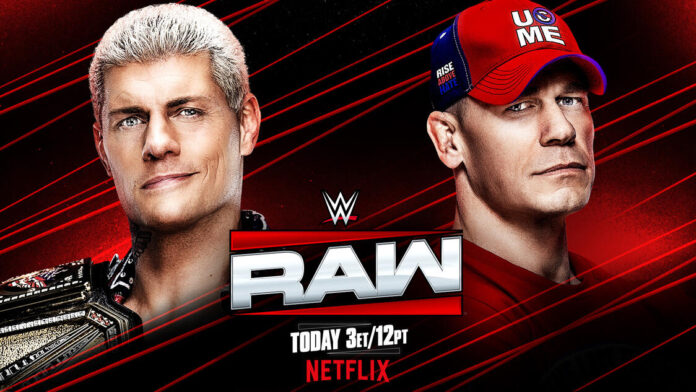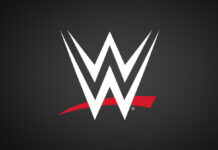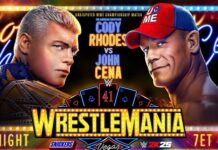
Professional wrestling, regardless of what form is takes, is still based on psychology and emotion, particularly because that’s the most direct way to connect with the audience. Sure. those five-star Tokyo Dome classics are incredible, but isn’t the cream of the crop still performed with a level of psychology that maximizes the in-ring efforts? Aren’t those thirty-minutes battles truly memorable because of how the audience felt during those peaks and valleys before the final bell?
I think that’s the stark difference between the perspective that some take when they look at the modern landscape compared to the building blocks of the industry that have remained a part of the foundation of the business, simply because those fundamentals are woven into the fabric of the genre. Granted, sports entertainment is subjective, if someone enjoys a 20-minute sprint of an overly-cherographed routine based purely on the athleticism without much other substance, they have a right to enjoy that type of performance.
However, I also think it’s fair to say that there’s much more depth to a performance when the audience is invested in who’s in the ring, not just the moves themselves. If wrestlers become interchangeable, is there truly an emotional connection to the audience? Isn’t there more longevity for the performer as a top draw if the crowd cares about them on an individual basis?
This week’s edition of Raw, specifically the opening promo with John Cena and Cody Rhodes, was a prime example of this.
The way this story is steadily unfolding is being very well done, as it has consistently had enough meat on the bone on a weekly basis to give the fans a reason to tune in without putting everything out there too early to avoid a plateau in momentum ahead of their anticipated Wrestlemania bout. The audience saw a shaken Cody Rhodes react the week after the Elimination Chamber pay-per-view, which was a segment that emphasized the shock of the heel turn. In the weeks that followed, John Cena made his first public comments, blaming the audience for having to endure years of their hostility without ever turning his back on the loyal portion of the fan base. The promos had depth, as the segment did on Monday, because John Cena had a point. There were layers to the segment, and that’s ultimately why the storyline has remained compelling as the build toward Wrestlemania progresses on Netflix.
Cena never compromised his values until he did, which spotlights how much of a villain he really is in 2025, because a true baby face never compromises their morals. Hence why Cody Rhodes refused The Rock’s offer a few months ago. Cena caved to the pressure and took the easy road, which proves, at least in theory, he wasn’t the solid baby face the audience thought that he was. Sure, in some ways, Cena is justified, but the bottom line is, he gave up on his loyal fan base before they gave up on him, which is the reason that this heel run has the level of heat that it does.
With that as the foundation, the narrative has moved toward the direct confrontation between champion and challenger, as it should, since the championship at stake is what will be on the line in Las Vegas. Of course, the context of what the title means, in this case, Cena’s threat to retire with it, is what’s built within the segments before the pay-per-view.
The background for the justification of the heel turn and the importance of the championship as far as what’s on the line with the result of the match were established so this past Monday was the way for the personal grudge to take center stage in the storyline.
The structure of the promo was very well done, and the two in the ring are such pros that they knew to allow the atmosphere to maximize the moment. The European market can’t get many live events each year because of the travel and logistics of a company based in the United States so they were enthusiastic about everything they saw, including a confrontation between the two performers in the main event of Wrestlemania. Just the visual of Cena and Cody face-to-face in the ring was enough to get a wild reaction from the crowd because they knew that something compelling was going to happen when they finally spoke on the mic.
I think it’s fair to say that the way that this entire angle is being presented is being done in a delicate fashion to avoid the fans siding with Cena as the “cool heel” as a way for the modern fans to pat themselves on the back since the rejection of the presented narrative is somehow seen as a badge of honor amongst a certain demographic of the audience. The fact that the WWE chose to spotlight that type of nonsense with network specials on when crowds hijacked the shows didn’t help matters. That’s why Cena didn’t give the audience anything that they wanted from when there were years of demands for him to become a villain. They didn’t get a new look, new music, or a new move set. He kept the same song, the same bright t-shirts, and the same five moves that generated jeers in the first place because this time around, his character is specifically designed for the negative reaction.
Furthermore, as I’ve written about before, nobody is going to truly be able to take the “John Cena spot” as the representative of the company if John Cena is still in that position so this heel turn is a way for him to pass the torch to Cody, albeit in a nontraditional manner.
So, when Cena got on the mic Monday, he leaned into the criticism of his baby face run, namely the spinner belt, as again, a way to reinforce the notion that the fans shouldn’t rally behind him. The ingredient that this storyline needed to really kick it into gear prior to WM was a level of sizzle, which the promo definitely delivered on Netflix. If this was legitimately a grudge match with true resentment, nothing would be off the table between the two competitors. In some respects, they used the fact that the fans know more about the behind the scenes aspects on the industry than any time previously in history because of the numerous podcasts that discuss the topics, as well as social media.
Given the amount of main stream media coverage that Vince McMahon’s disgraceful exit from the WWE received, even the most causal fan knows that he’s persona non grata in the organization now so there’s a level of animosity when Cody referred to Cena as Vince’s chosen star because the audience knows that under most circumstances, the former owner wouldn’t be mentioned at all. In a similar, but not nearly as sinister fashion, Cena responded with a reference to Tony Khan, specifically the notion that he’s a money mark from a billionaire family. Obviously, it’s just a way to work some extra heat into the promo, but there was a time when the WWE refused to reference any other organization, and the fact that this promo mentioned the “competition” is another way that it stood out as a main event storyline.
At the conclusion of the segment, Cody landed his finisher on Cena, giving him a level of revenge for the cheap shot at the Elimination Chamber pay-per-view, but you can bet that Cena will probably beat down Cody at some point before Wrestlemania, which will gives the audience another reason to tune in to see what happens next.
The biggest takeaway from this promo shouldn’t be the taboo topics that it covered, that was done occasionally before, but rather the way that it was presented, specifically with how the performers allowed their star power and the circumstances to maximize the effectiveness of the segment. The storyline needed a level of sizzle to continue to progress toward the main event of Wrestlemania and the segment accomplished it.
The two biggest stars in the company got the fans talking about their upcoming pay-per-view main event, and nobody had to be impaled on nails or thumbtacks to prompt the discussion.
What do you think? Share your thoughts, opinions, feedback, and anything else that was raised on Twitter @PWMania and Facebook.com/PWMania.
Until next week
-Jim LaMotta
E mail [email protected] | You can follow me on Instagram, Facebook, & Threads @jimlamotta89







